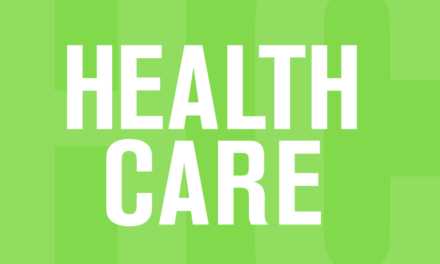My entry in mid-April 11 put forward the proposition that the following couple of weeks would tell us a lot about the COVID-19 pandemic’s impact on Canada, and the Trudeau government’s handling of the crisis,
On the latter issue, the jury’s still out on the performance of the government and the Public Health Agency of Canada (PHAC) and will likely remain so for a long time. But the political unity that characterized the first weeks of the country’s response has been eroded by criticism of the government’s reluctance to denounce China for its initial response to the pandemic. (Political harmony continues to prevail in Nova Scotia despite the tragic surge in deaths in long-term care homes).
The task of figuring out how the campaign against the disease is progressing is complicated by the fact that governments themselves set the bar with broad parameters and vague time frames. (And in the case of Trump, change them on a whim).
On April 11, the federal government released grim projections estimating that even with adherence to the restrictions then in place, 11,000 to 22,000 Canadian would die from COVID-19.
That was a long-term projection that sees the pandemic hanging around at least until the fall. As of last week, the feds were sticking with that range, even as some of their short-term projections were proving to be overly optimistic.
Federal officials projected a death toll of from 500 to 700 by April 16, and case numbers ranging from a low of 22,580 to as much as 31,850. When they made that projection there were 18,447 cases and 401 deaths. On April 16, according to the reference website Worldometer, Canada was near the top of the range in confirmed cases at about 29,000. But deaths in long-term care homes drove mortality to 1,058, a full 50 per cent above the worst-case projection.
Despite a less than promising start in prognostication, PHAC last week made more short-term projections – a range of 3,277 to 3,883 for deaths, and 53,196 to 66,835 for cases by May 5. On May 5, we were at the middle of the range for cases, at about 61,000, but again blew through the top of the range for deaths at 3,918.
Because the virus came to this country late, Canada’s death rate was initially much lower than most other industrialized countries. As of April 11, there were 569 Canadian deaths from COVID-19, equating to 15 per million population. But with more than 3,000 deaths over the past three weeks, Canada’s deaths per million increased nearly six fold, to more than 104 per million.
Back on April 11, Canadian officials could take some solace by looking south, where the U.S. death rate was four times worse than ours. Lost in all of the noise from the Trumpland circus is the fact that over the last three weeks COVID-19 deaths in the U.S. have increased at a significantly lower pace than in Canada. The U.S. rate is now just slightly more than twice Canada’s rate.
Change in deaths/million selected countries
| April 11 | May 5 | Change | |
| Canada | 15 | 104 | 593.3% |
| U.S. | 59 | 214 | 262.7% |
| U.K. | 145 | 433 | 198.6% |
| Germany | 33 | 83 | 151.5% |
| Belgium | 289 | 692 | 139.4% |
| France | 202 | 386 | 91.0% |
| Spain | 350 | 548 | 56.6% |
| Italy | 312 | 485 | 55.4% |
Source: Worldometer
As the table shows, between April 11 and May 5, Canada’s rate of increase in deaths per million was by far the highest among the countries selected. Hopefully it’s the phase of the disease we’re going through, and we can look for the increase to level off, with the mortality rate moving toward the low end of the projected range of 11,000 deaths. That would be equivalent t0 290 deaths per million, which on the macabre pandemic report card, could be considered a passing grade.
Fiscal flameout
In the foreign country that was Canada before the pandemic, it was big news when some pension adjustments and other expenses added $7 billion to the federal deficit for 2019-20. The Conservatives were of course, outraged. Last week the Parliamentary Budget Office (PBO) released a new COVID-19 scenario showing the federal deficit for 2020-21 coming in $68 billion above an earlier estimate. Hardly anyone seemed to notice.
The April 30 scenario was an update from two earlier efforts by the PBO to paint a picture of the effect on the federal government’s books of the combined impact of decreased revenue as a result of the economic downturn caused by the pandemic and the increased spending deployed to cope with the economic crisis.The PBO’s April 9 scenario had revenue dropping by about $80 billion. The latest scenario added $27 billion to that loss, mainly because the drop in employment and economic activity was worse than expected.
On the spending side, the latest scenario included an additional $40.7 billion to help individuals and businesses, which when added to the $27 million revenue drop produces the $68 billion deficit increase. The table below shows the change in estimated cost of the menu of aid programs announced to April 24.
| Program | Apr.11 | Apr.30 |
| Wage subsidy | $71.0B | $76.0B |
| Emergency response (CERB) | $22.3B | $35.5B |
| Emergency business acct | – | $ 9.1B |
| Student Assistance | – | $ 5.3B |
| Enhanced GST rebate | $ 5.7B | $ 5.7B |
| Enhanced child benefit | $ 1.9B | $ 1.9B |
| Other | $ 4.5B | $12.6B |
| Total | $105.4 | $146.1 |
Source: PBO, my calculations
The spending total as of April 30 does not include about $5 billion announced late last week to help post-secondary students who lost job opportunities because of COVID-19. Nor does it include any new items announced this week or any estimate of increases in transfers to provincial governments to help with health care costs.
Putting together declining revenue, increased spending and a shrunken economy, the PBO produced estimates of deficit-to-GDP and debt-to-GDP ratios for 2020-21 for each scenario.
- Budget deficit April 9 scenario: 8.5 per cent of GDP, largest since 1984-85;
- Budget deficit April 30 scenario: 12.7 per cent of GDP, largest since series started in 1966-67;
- Debt-GDP ratio April 9 scenario: 41.4 per cent, highest since 2002-03
- Debt-GDP ratio April 30 scenario: 48.4 per cent, highest since 1999, and 60 per cent higher than last year’s projected ratio of 30.1.
Looking ahead, one can hope that T.S. Eliot had it right in The Waste Land, and it turns out that “April is the cruelest month.”
-30-






